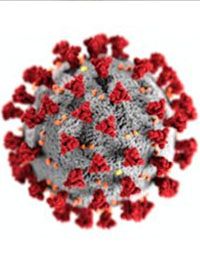Disparities Remain Regarding Access to Telehealth
Disparities in access to telehealth for cancer care were seen across more than 20 tumor types, according to study findings that were presented during a press briefing ahead of the 2022 ASCO Annual Meeting.

Disparities in access to telehealth for cancer care were seen across more than 20 tumor types, according to findings from a retrospective study that were presented during a press briefing ahead of the 2022 ASCO Annual Meeting.
“The COVID-19 pandemic was associated with disruptions in healthcare delivery, including substantial declines in personal clinical visits,” lead study author Jenny S. Guadamuz, PhD, a postdoctoral research fellow, USC Program on Medicines and Public Health, USC School of Pharmacy, said during a presentation of the data. “And as a result, many clinicians shifted to telemedicine services, and this was facilitated by federal and state regulations enacted early in the pandemic that expanded coverage and reimbursement for these services. And while there's some evidence suggesting that telemedicine uptake varied by social demographic factors such as age and region, there has been limited evaluation of inequities.”
To investigate the inequities associated with telemedicine use by race, ethnicity and social determinants of health, the study authors analyzed electronic health records from a Flatiron Health database.
They reviewed the records of 26,788 people aged 18 years and older who started their first-line of cancer treatment between March 2020 and November 2021. The patients included in the analysis had to have had received follow-up care within 90 days and been treated at a community-based oncology practice.
The findings were adjusted using patient clinical characteristics including age, sex, performance status and the stage of their disease.
Of the patients included in the analysis, 16.0% used telemedicine services.
The investigators identified that telemedicine use was notably lower in Black patients when compared with their White counterparts (13.2% versus 15.6%, respectively). Additionally, patients without documented insurance were less likely than patients who had private insurance or were insured through Medicare to use telemedicine services during the same time period (11.8% versus 16.4%).
The largest disparity in telemedicine use was in people based on socioeconomic status —10.6% of patients living in the lowest socioeconomic status areas partook in telemedicine care compared with 23.6% of patients in areas with the highest socioeconomic status.
Guadamuz stressed that the inequities remained after the investigators adjusted for clinical characteristics.
“We found that black patients had lower odds of telemedicine of using telemedicine services in both unadjusted and adjusted models,” she said. “In other words, clinical characteristics do not account for these differences.”
And although their findings demonstrated that telemedicine use waned as the pandemic progressed (25% from March to May 2020 versus 12% from Sept. to Nov. 2021), the inequities persisted.
“These findings are critically important considering recent efforts to make coverage for telemedicine services permanent instead of being tied to the HHS public health emergency declaration,” she said. “There (are) also efforts to increase reimbursement rates for telemedicine services by Medicare, several Medicaid programs and private insurers.”
The most important conclusion from these findings, according to Guadamuz, is that this disparity access and use to telemedicine services may further widen the inequity gap in cancer care.
For instance, she explained, it should not be assumed that every patient has equitable access to the necessary infrastructure — such as high-speed internet — to utilize telemedicine services.
Guadamuz noted that there are several things to keep in mind for future research. One thing she said was to see if there’s any differences in the timely receipt of necessary treatment between patients who received telemedicine care and those who received in-person care. Moreover, it is important to learn from the centers that have successfully utilized telehealth services.
“It'll be important to determine what types of practices are providing telemedicine more equitably to their patients, because we can learn from these clinics and bring it back to the rest of the of our network of clinics, therefore supporting more affordable care at community-based oncology clinics,” Guadamuz concluded.



